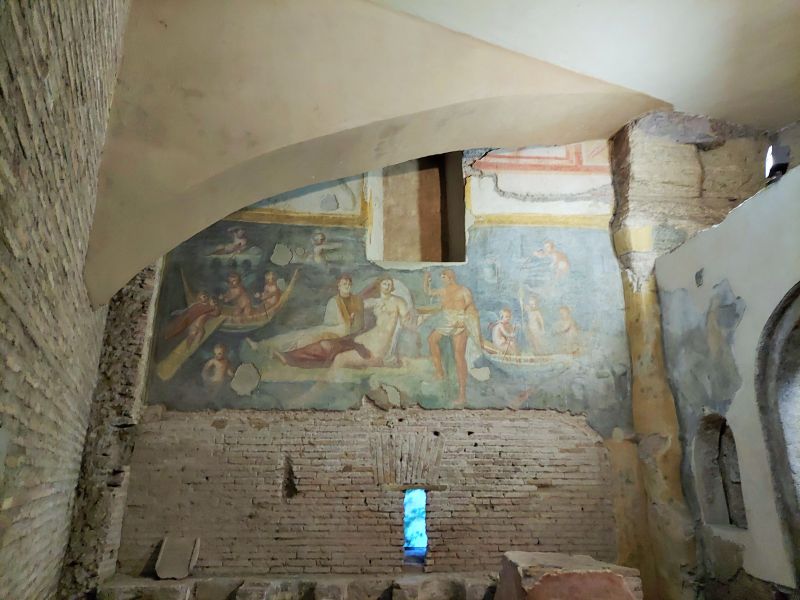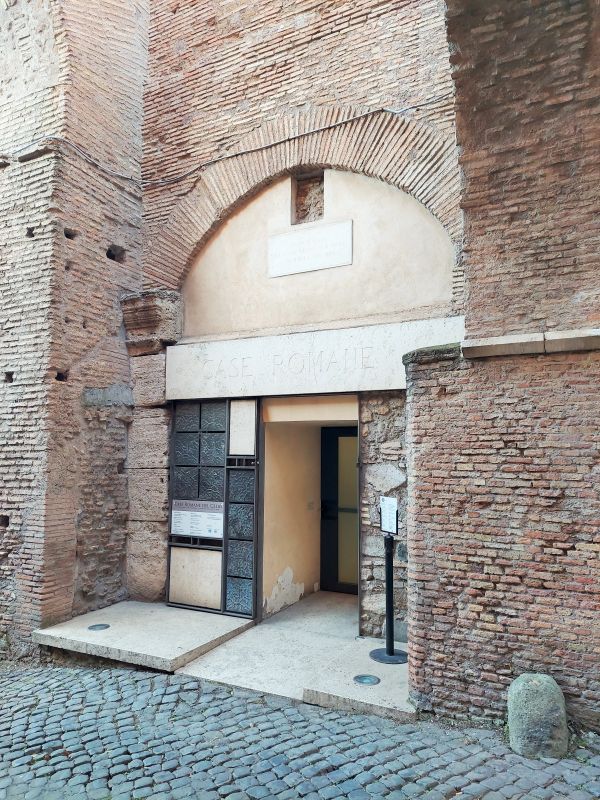In the heart of Rome, on the Celio Hill, lies one of the lesser-known yet fascinating treasures of antiquity. The Roman Houses of the Celio (Case Romane del Celio), a complex of houses and rooms hidden beneath the Basilica of Saints John and Paul (Santi Giovanni e Paolo).
History and Architecture
The Domus were discovered in 1887 by Father Germano di San Stanislao, the rector of the basilica at the time. The site is one of the most beautiful places in underground Rome, thanks to the extraordinary state of preservation of the rooms and their great historical, artistic, and religious value.
Located on various levels of the Celio Hill, the complex consists of about 20 rooms, dating from the 1st to the 4th century. The lowest level contains a two-level house equipped with a private bath (balneum) from the early 2nd century AD. Subsequent layers include shops (tabernae), insulae (residential multi-family buildings), apartments, and sacred spaces. The halls are characterized by well-preserved wall frescoes and floor mosaics. Columns and capitals indicate the high social status of their inhabitants. One of the most fascinating aspects of the Roman Houses of the Celio is the diversity of decorative styles. From simple geometric motifs to advanced mythological scenes and portraits.
This is the place where, according to tradition, the saintly brothers John and Paul lived, suffered martyrdom, and were buried around the year 362 AD. It was during the reign of Emperor Julian the Apostate, who tried to restore pagan cults and combat Christianity. This event made the site sacred and venerated, later leading to the construction of the current basilica.
Visiting the Case Romane of the Celio
The entrance is located on the charming Clivo di Scauro. An ancient Roman street and once the main axis of the hill, which has preserved part of its original layout. It’s advisable to check the current opening hours on the official website. Currently, the site is open from 10:00 AM to 4:00 PM. It’s closed on Tuesdays and Thursdays. A ticket costs 8 euros. You can book it online (for an additional 2 euros), but it is not a popular tourist spot. You can visit it without prior reservation without any problems. The visit is self-guided. You can also opt for a guided tour, but groups are only in Italian. Autoguides are available on-site (in English and Italian) for 5 euros. Plan at least an hour to explore the underground. While on Celio, also check out the neighboring Museum of Forma Urbis, which you can read about here.




